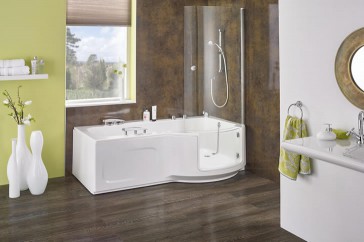Investing in a walk-in tub is a significant step towards enhanced comfort and safety, particularly for seniors or those with mobility challenges. However, like any substantial investment, a walk-in tub requires regular maintenance to ensure it provides the optimal performance, hygiene, and durability you deserve. This article delves into practical and efficient strategies for maintaining your walk-in tub, ensuring it remains a sanctuary of relaxation and accessibility for years to come.

- Regular Cleaning to Prevent Buildup and Stains:
Regular cleaning is paramount to prevent soap scum, stains, and mineral buildup, which can tarnish the appearance and functionality of your tub. Use non-abrasive cleaners and a soft cloth to avoid scratching the surface. For a more natural approach, a solution of vinegar and water can help dissolve mineral deposits and restore shine without harsh chemicals.
- Inspecting and Cleaning the Non-Slip Surfaces:
The non-slip floor is a crucial safety feature of any walk-in tub. Over time, soap and other residues might accumulate, reducing its effectiveness. Regularly inspect these areas, cleaning them with suitable products to ensure they maintain their grip. This practice isn’t just about cleanliness; it’s a critical safety measure.
- Managing the Water Jets and Air Holes:
If your walk-in tub features hydrotherapy jets, these require special attention. Residues or bacteria can build up inside, affecting water quality and jet performance. Regularly run the jets with warm water and a suitable tub cleaner or plain vinegar solution, followed by a thorough rinse cycle, to keep the internal mechanisms clean.
- Checking and Maintaining Seals and Mechanisms:
The door seal is vital for preventing leaks. Inspect the seal regularly for signs of wear, damage, or mold, and replace it if necessary. Additionally, ensure locking mechanisms function smoothly without forcing them, which could lead to damage. A silicone lubricant can be applied sparingly to moving parts to maintain smooth operation.
- Routine Professional Inspection:
While regular cleaning and inspections can be performed at home, having a professional check your walk-in tub annually contributes to its longevity. Professionals can recognize issues you might miss, such as hidden leaks or mechanical wear, preventing minor issues from escalating into costly repairs.
- User Guidelines and Precautions:
Following manufacturer guidelines for use and cleaning plays a crucial role in maintaining your tub’s integrity. Avoid overfilling the tub, and be cautious with oil-based products that may damage the tub’s surface or cause system clogs. Being mindful of these guidelines ensures you enjoy all the tub’s therapeutic and comfort benefits without inadvertently causing damage.
Conclusion:
Maintaining your walk-in tub is key to ensuring that it continues to serve as a safe, enjoyable, and convenient part of your daily routine. Through regular cleaning, inspections, and adherence to usage guidelines, you can preserve your tub’s condition and performance. By committing to a consistent maintenance schedule, you protect your investment and ensure that every bath you take is as relaxing and beneficial as the last, with the peace of mind that your walk-in tub remains a reliable, hygienic, and restorative haven.








